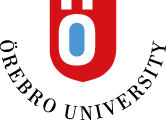Play and vigorous work to boost employees’ creativity
Keywords:
play, humour, work engagement, performance orientation, innovativenessAbstract
In today’s turbulent business environment, generating novel innovations are of vital importance for companies operating in local and/or global markets. Consequently, the factors affecting employees and their innovative capacity are worthy of research. The ambition in this conceptual paper is to discuss several such possible contributors, i.e. communication culture, including playful and/or humorous features of it, cultural dimension of performance orientation and work engagement.
Nowadays, all employees in companies are to take part in creating new solutions, and not just some part of the organization, such as R&D department (Cassiman & Veugelers, 2006; Kesting and Ulhøi, 2010). For this reason, it is important to have the individuals’ innovativeness in focus of research. The importance of this kind of innovativeness emphasizes the need to deepen the understanding of ways to influence innovativeness. For one, play appears to have beneficial effects on the creativity and idea generation of individuals (Mainemelis & Ronson, 2006; Russ et al., 1999). Moreover, the organizational culture (Hunter et al., 2007) and communication as one part of it (Isaksen et al., 2001) have also been brought into the discussion of innovativeness. In these discussions, play and humour, however, seem quite often to be left to the background (Kinder et al., 2019). Hence, it is suggested here that the aspects of playfulness and humour employed in corporate communication are positively linked to individual level innovativeness.
Apart from corporate culture, also national cultures may play a role in innovativeness at an individual level. In particular, high performance orientation societies (Javidan, 2004) are more concerned with results, rewards, demanding targets, taking initiative etc. Based on these features, this dimension can be expected to have a positive effect on innovativeness. Set aside the corporate level, at an individual level work engagement has also the potential to enhance individual’s innovativeness as it is characterized as a state of mind with vigor, dedication and absorption (Schaufeli & Bakker, 2004; Schaufeli et al., 2002). Engaged employees of this kind even experience tiredness as something positive associating it with accomplishments (Bakker et al. 2011) which, in practice, could be new innovations. This would imply that there is a potential for engaged employees to be creative.
In sum, the primary goal here is to develop a framework of the concepts in order to demonstrate the suggested connections of communication culture, playful and / or humorous communication, performance orientation and work engagement to individual level innovativeness. Drawing from the hypothesized relations, several propositions are formulated. The framework provides a basis for further research to produce results with practical implications to help organizations enhance employees’ innovativeness.
References
Cassiman, B., and Veugelers, R. (2006) “In search of complementarity in innovation strategy: Internal R&D and external knowledge acquisition”, Management science, Vol. 52, No. 1, pp. 68-82.
Hunter, S.T., Bedell, K.E. and Mumford, M. D. (2007) Climate for creativity: A quantitative review. Creativity Research Journal, 19, 69–90.
Isaksen, S. G., Lauer, K. J., Ekvall, G., & Britz, A. (2001) Perceptions of the best and worst climate for creativity: Preliminary validation evidence for the situational outlook questionnaire. Creativity Research Journal, 13, 171–184.
Javidan, M. (2004). Performance orientation. In House, R. J., Hanges P. J., Javidan, M., Dorfman, P. W. & Gupta, V. (eds.). Culture, Leadership, and Organizations: The GLOBE Study of 62 Societies. Thousand Oaks, CA: Sage, 239 – 281.
Kesting, P., and Parm Ulhøi, J. (2010) “Employee-driven innovation: extending the license to foster innovation”, Management Decision, Vol. 48, No. 1, pp. 65-84.
Kinder, T., Stenvall, J., and Memon, A. (2019). Play at work, learning and innovation. Public Management Review, 21(3), 376-399.
Mainemelis, C., & Ronson, S. (2006). Ideas are born in fields of play; towards a theory of play and creativity in organizational settings. Research in Organizational Behaviour, 27, 81–131.
Russ, S. W., Robins, A. L., & Christiano, B. A. (1999). Pretend play: Longitudinal prediction of creativity from affect in fantasy in children. Creativity Research Journal, 12, 129–139.
Schaufeli, W. B., Salanova, M., Gonzáles-Romá, V. and Bakker, A.B. (2002) “The measurement of engagement and burnout: A two sample confirmatory factor analytic approach.” Journal of Happiness Studies, Vol 3, pp 71-92.
Schaufeli, W.B. and Bakker, A.B. (2004) “Job demands, job resources, and their relationships with burnout and engagement: A multi-sample study.” Journal of Organizational Behavior, Vol 25, pp 293 – 315.



